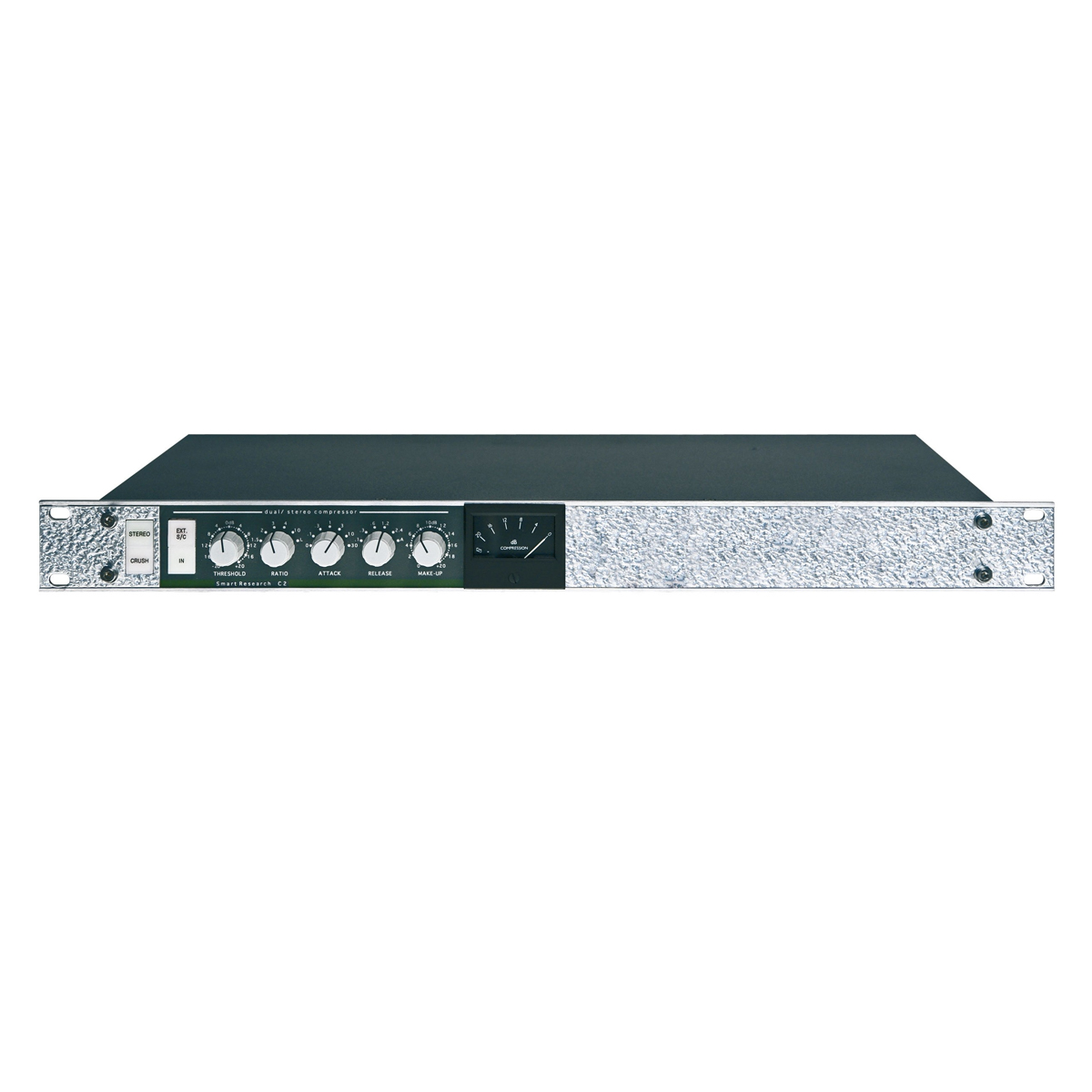Smart Research C2M Compressor
The C2 compressor houses two independant mono compressors, or in STEREO mode, the left-hand controls operate both audio channels, with the right-hand controls not used, giving true Stereo operation. The C2M version has one set of controls and two audio channels for Stereo use, whilst the C2R is a dual channel remote expander for building up to 8 channel systems controlled from one C2M or C2.
The characteristic sound of this unit arises mostly from the fast response at the onset of compression, which when delayed to occur around the mid range attack settings (after 0.3 to 3 milliseconds) results in a window through which transients can still pass. When used accross a mix, or with any dynamic programme, this has the effect of adding ‘punch’, as the sidechain ‘breathes’ around these transients, while still controlling overall levels. CRUSH mode has been developed as an extension of this ‘musicality’, adding to and accentuating the factors involved in producing the character of the unit. CRUSH may sound surprising to those interested in more gentle applications, being capable of exaggerated compression effects, but in conjunction with the fast limit settings also introduced with this unit, it allows the C2 to be used for a much wider range of applications than the C1.
Operation
- Fast attack and limit settings for protective limiting.
- Crush mode gives f.e.t ‘overcompression’ with tailored frequency response, and higher distortion, for ‘huge’ dynamic effects.
- External sidechain inputs, (for ducking etc.)
- Power fail bypass for broadcast or live sound.
- Ratios 1.5;1, 2;1, 3;1, 4;1, 10;1 and Limit.
- Attack 0, 0.1, 0.3, 1, 3, 10, and 30 m/sec.
- Release 0.1, 0.3, 0.6, 1.2, and 2.4 seconds.
Options
- External fader level control input, (to order) (stereo mastering etc).
- Extra dual channel slave units, for multichannel applications, (film / surround formats etc.).
- New generation of Voltage Controlled Amplifiers.
- High slew rate amplifiers, with hybrid f.e.t/ transistor inputs (Analog Devices).
- High current push-pull transistor outputs.
- Total symmetry throughout signal path.
- No electrolytic capacitors used in main signal path.
- All inputs and outputs balanced.

